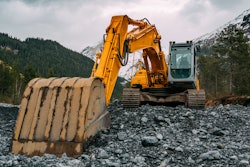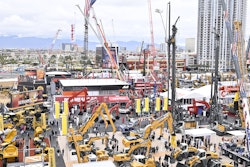
Last year (2019) turned out to be a better year for the European construction equipment sector than initially expected. Whereas CECE had forecast a “soft landing” with a modest market decline across the industry, total sales in Europe in 2019 grew by 3.4% compared to 2018. The slowing momentum over the year, however, was indeed in line with expectations: after +7.1% in Q1 and +6.5% in Q2, the market turned negative and declined by 0.1% and 2.5%, respectively in Q3 and Q4. The European market reached a new high after the economic crisis of 2008, without hitting the record volumes of 2007.
Secretary General Riccardo Viaggi says, “This is when we like to be wrong. 2019 was better than we had expected, the underlying demand has remained stable and the bauma effect materialized itself in Q2.”
Detailed performance in 2019
Most regions in Western and Northern Europe came from already high levels and saw a stable development in 2019 or even more growth. Southern, Central and Eastern European markets recorded growth on average but did not meet our most optimistic expectations. Once more, the Turkish market was the negative outlier, as sales saw a free fall after an already negative 2018. Sales of earthmoving equipment in Europe (including Russia and Turkey) grew by another 5% in 2019. Sales of road equipment on the European market went up by 2%. This positive development could only be achieved by a singular effect related to bauma. Concrete equipment met expectations of a slight downturn of 6%. Tower cranes also saw a 6% decline in sales in Europe. This was primarily the result of a weak fourth quarter, when sales dropped by 19%.
Outlook 2020
In the beginning of 2020, the CECE Business Climate Index showed an optimistic trend, which turned again into a dramatic decline in March with the early sign of the COVID-19 disruptions.
By the time of writing the Annual Economic Report, a 10% decline in global sales and a 5% decline in the European market were realistic scenarios, considering the current demand of equipment and economic cycles. However, as of mid-March 2020, any forecast has become impossible because of the emerging COVID-19 crisis, which will certainly have a severe impact on the construction equipment industry as well as the overall economy.
A CECE flash Barometer survey carried out between March 23 and 27 shows clear concerns amongst CECE member companies with 32% of respondents being significantly affected by the crisis and 30% already closing factories. The COVID-19 pandemic challenges the customer-related issues, namely shutdown of construction sites and cancellation of projects. With 40% of respondents foreseeing between 10 and 30% decrease in sales one thing is certain: the COVID-19 crisis is affecting and will affect the construction equipment sector.
As there was a solid demand for construction machinery before the crisis and many projects were shut down but not cancelled, CECE is optimistic about the possibility for the industry to recover as soon as the virus is defeated.
“After recording the third positive year of sales increase across the full spectrum of construction machines, we are now facing this crisis from a position of solid growth and strong fundamentals. This does not mean that the disruptions will not be severe: demand will slow substantially, factories are and will be shutting down temporarily and strong public investment measures will be needed to keep the European economy afloat,” concludes Riccardo Viaggi, CECE Secretary General.
In the meantime, CECE and other European industry associations representing the non-road mobile machinery sector called on the EU to adopt swift measures in response to disruptions caused by the COVID-19 pandemic.



















